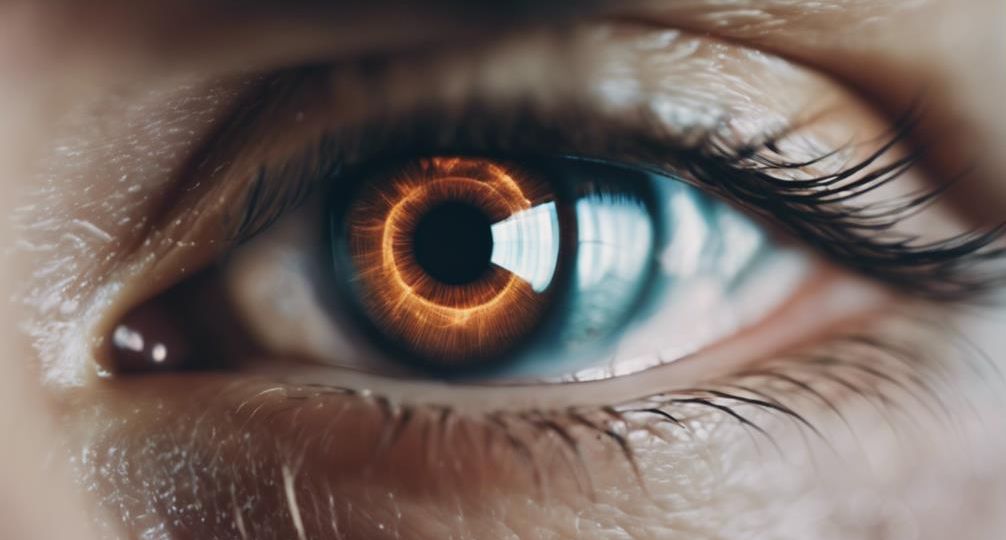
What if someone uses my YouTube video?
Just by chance, you’re scrolling through YouTube and you stumble upon your own content on someone else’s channel. You’re startled, your heart beats a little faster, and a flurry of questions start racing through your mind.
What does this mean for you and your original content? How might this impact your channel’s reputation, potential earnings, or even your legal rights?
Well, let’s explore this unnerving scenario further and uncover what actions you can take, to ensure your content remains protected.
Key Takeaways
- Recognize unauthorized usage of your video through YouTube’s DMCA and fair use criteria.
- Report copyright infringement immediately to safeguard your digital content and potential revenue.
- Utilize YouTube’s Copyright Strike system and Content ID for proactive protection and tracking misuse.
- Consider legal action and expert advice for addressing false claims, damages, and resolving copyright disputes.
Understanding YouTube’s Copyright Policies
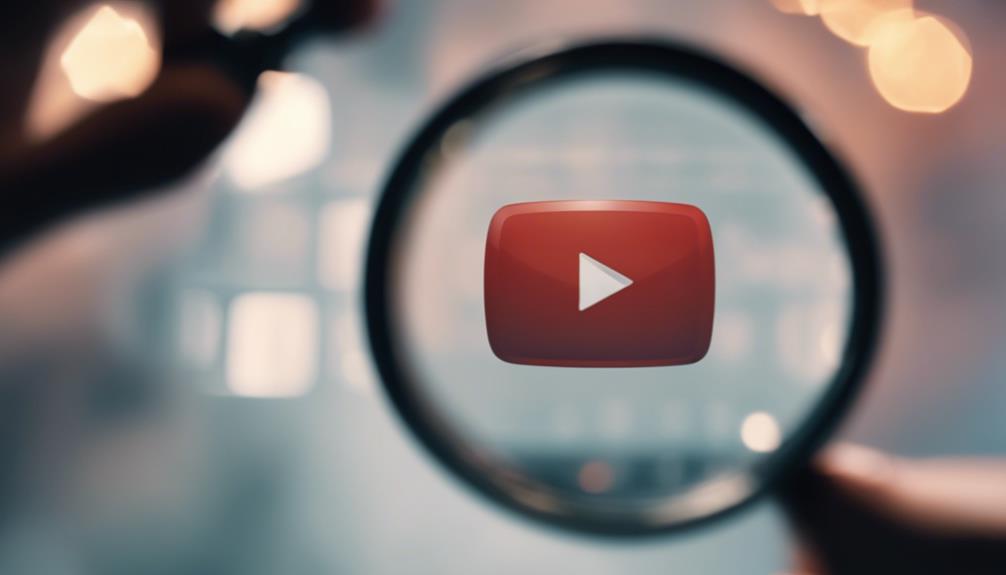
Grasping YouTube’s copyright policies is crucial for avoiding any potential infringement issues while sharing your content on the platform. You need to understand the Fair Use Policy, which allows limited use of copyrighted material without permission from the owner. However, it’s not a free-for-all; there are stringent guidelines such as the purpose and nature of the use, the nature of the copyrighted work, the amount used, and the effect on the market for the original work.
The Monetization Impact is another key aspect. If you’re infringing on someone else’s copyright, your monetization rights could be at risk. YouTube’s system, Content ID, can detect copyrighted material, and if found, the revenue from your video could go to the copyright owner, not you.
Innovation doesn’t mean disregarding the rules. It’s about creating original content and adding value to your audience. Don’t rely solely on someone else’s work. Instead, transform it, comment on it, and make it your own. This approach not only ensures you abide by YouTube’s copyright policies but also fosters an innovative culture. Remember, understanding leads to better application and, ultimately, success.
The Implications of Video Theft
When you steal videos, you’re not just breaching YouTube’s copyright policies, but you’re also jeopardizing your channel’s reputation and potentially opening yourself up to legal consequences. This act, known as Digital Piracy, is a serious offense in the online world. It’s a blatant disregard for Intellectual Rights and can lead to severe repercussions, both legally and socially.
It’s essential to understand that every video posted on YouTube is a unique product of someone’s creativity and hard work. By stealing it, you’re essentially robbing that individual of their rightful credit and revenue. This unethical practice can seriously tarnish your online reputation, making it hard for you to establish trust and credibility with your viewers.
Moreover, if the original creator decides to take legal action, you could find yourself facing heavy fines or even jail time. In the digital age, it’s easier than ever to track down and prosecute instances of Digital Piracy.
Recognizing Copyright Infringement
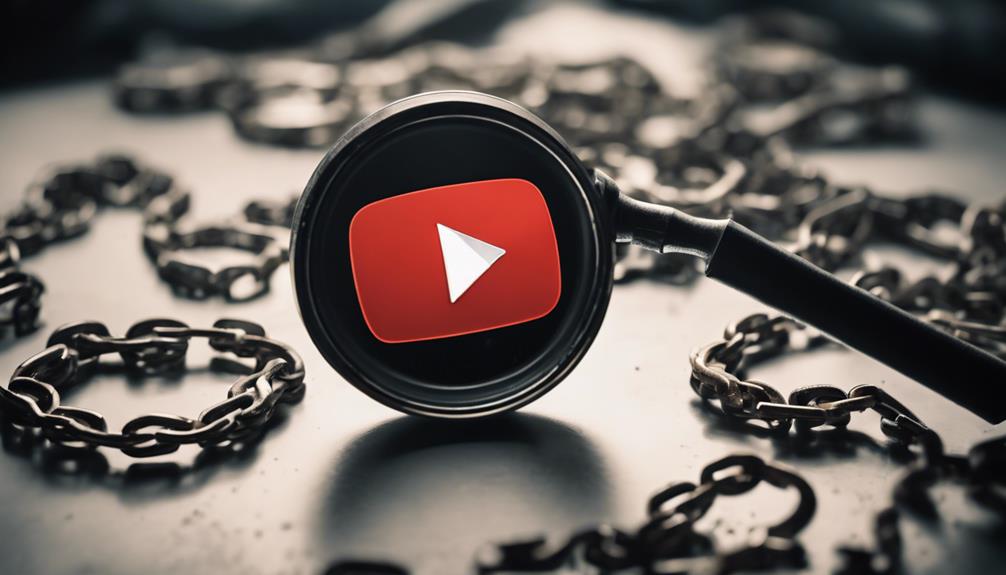
To avoid falling into the trap of copyright infringement, it’s crucial that you learn how to recognize it. The Digital Millennium Copyright Act (DMCA) provides a clear framework for understanding when a violation occurs. If your video is copied, altered, or distributed without your permission, this can be a definite sign of infringement.
Fair use misconceptions often complicate matters. Many people believe that they can use any content freely as long as they credit the owner or if the content is freely available online. This is a common misconception; fair use has specific criteria. It isn’t just about crediting or availability, but it also involves consideration of the purpose (educational, news reporting, etc.), the nature of the copyrighted work, the amount used in relation to the whole, and the effect on the market value of the original work.
Innovation flourishes where respect for intellectual property is upheld. By understanding copyright infringement, you’re not only protecting your creations, but you’re also fostering a thriving digital ecosystem. Keep your content original, respect others’ works, and stay informed about the ever-evolving landscape of digital rights.
Now that you’re more acquainted with recognizing copyright infringement, let’s explore how you can report unauthorized use of your video on YouTube. When it comes to the world of digital content, it’s crucial to understand the tenets of Digital Rights Management and the Fair Use Doctrine.
To report a copyright violation, YouTube has a straightforward process. You’ll have to submit a copyright complaint, also known as a Digital Millennium Copyright Act (DMCA) notification. This is where you’ll specify the infringing content and provide evidence that you’re the rightful owner.
Here’s a quick guide:
| Steps to Take | Description |
|---|---|
| Locate the Video | Find the URL of the video that’s infringing your copyright. |
| Submit a Claim | Navigate to the ‘Report’ option and choose ‘Infringing my rights’. |
| Follow the Process | Fill out the form, add your signature, and submit. |
The Role of YouTube’s Copyright Strike
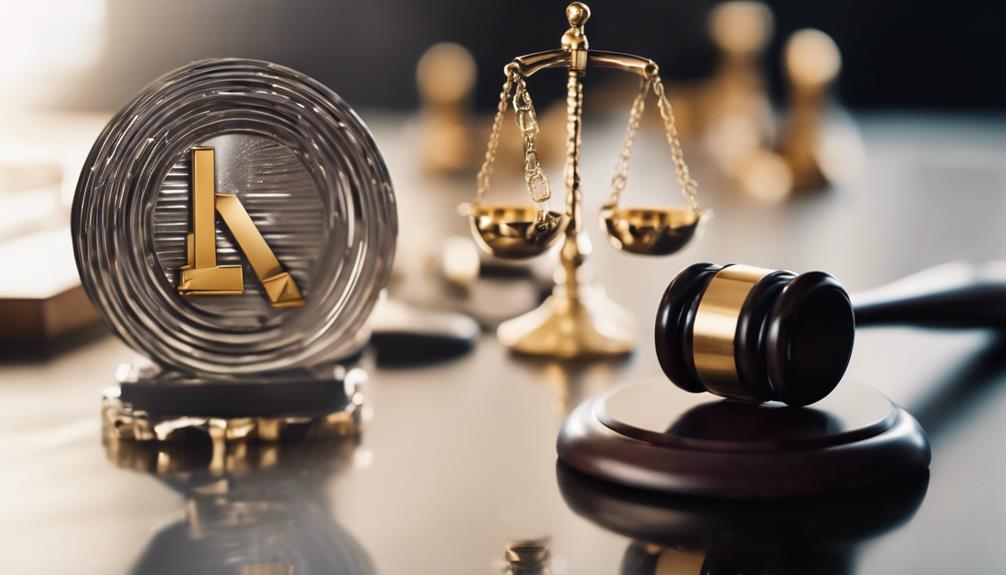
Understanding the role of YouTube’s Copyright Strike system is crucial in protecting your digital content and navigating potential copyright disputes. This system is designed to safeguard your videos from unauthorized use by issuing warnings, or ‘strikes’, to infringers.
- A first strike is a wake-up call, alerting the infringer that they’ve overstepped boundaries.
- If not rectified, a second strike within a ninety-day period takes it a notch higher, resulting in severe consequences.
- A third strike within the same period can lead to account termination.
These Strike Consequences aren’t to be taken lightly, as they can significantly impact a channel’s standing and operations.
However, YouTube also recognizes Fair Use Exceptions. This legal doctrine allows limited use of copyrighted material without permission for certain purposes, such as commentary, criticism, news reporting, teaching, and research. But it’s not a one-size-fits-all kind of deal. Each case is unique and requires careful analysis to determine if it falls under fair use.
In a world that thrives on innovation, understanding the ins and outs of YouTube’s Copyright Strike system can be your shield against unintentional violations and your sword in protecting your creative content.
Utilizing Content ID for Protection
Harnessing the power of YouTube’s Content ID system provides an additional layer of protection for your creative efforts, allowing you to monitor and manage how your content is used on the platform. It’s a technology designed to scan uploaded videos against a database of files submitted by content owners. If there’s a match, you’re notified and given options on what to do next.
However, it’s crucial to understand the Fair Use Doctrine. This law permits the use of copyrighted material without permission under certain circumstances. Therefore, not all matches mean copyright infringement. Analyzing the context, purpose, and amount used is necessary to determine if a situation falls under fair use.
The monetization impact of the Content ID system is significant. If someone uses your video unlawfully, you can choose to monetize their video and earn revenue from it. Alternatively, you can request a takedown, leading to a Copyright Strike against the offender.
Utilizing Content ID is a proactive approach to intellectual property protection. It’s not perfect, but it’s a powerful tool to help you maintain control over your work, ensuring it’s respected and used appropriately on the digital stage.
Watermarking and Other Preventive Measures
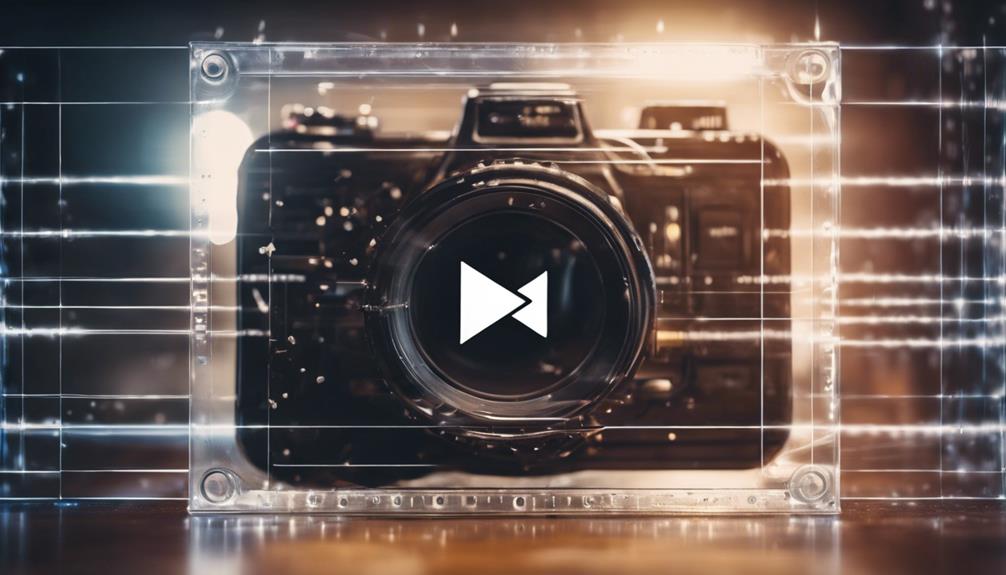
In addition to leveraging Content ID, you can also employ other preventive measures like watermarking to safeguard your work from copyright infringement on YouTube. Digital watermarking benefits your content by making it harder for others to use your work without permission. This is achieved by embedding watermarks techniques into your content, which can subtly identify it as yours.
Watermarking can be both visible and invisible, each with their own merits. Visible watermarks are clear to the viewer and can discourage unauthorized use. Invisible watermarks, however, aren’t detectable to the naked eye and require specific software to reveal, providing an extra layer of security.
Consider these key points regarding watermarking:
- A well-placed watermark can deter unauthorized use.
- It can aid in tracking the usage of your content.
- It provides proof of ownership if dispute arises.
- Imperceptible watermarks offer clandestine security.
- It’s a cost-effective method of protecting your content.
Legal Consequences for Infringers
If you’re found guilty of copyright infringement on YouTube, you’ll face serious legal consequences, which can include hefty fines and potential removal of your content. These infringement penalties are no laughing matter and can deeply impact your online presence.
The legal remedies available to the original content owner are numerous. They can issue a takedown notice, demand damages, or even take you to court. The infringement penalties are designed to deter content theft and ensure original creators receive their due credit.
Let’s delve deeper into the potential consequences through the table below:
| Consequence | Description | Impact |
|---|---|---|
| Content Removal | Your infringing video can be taken down | Loss of views and potential monetization |
| Account Suspension | YouTube may suspend your account | Complete loss of online presence |
| Legal Action | The original owner can sue you for damages | Financial loss and potential reputational damage |
Addressing False Copyright Claims
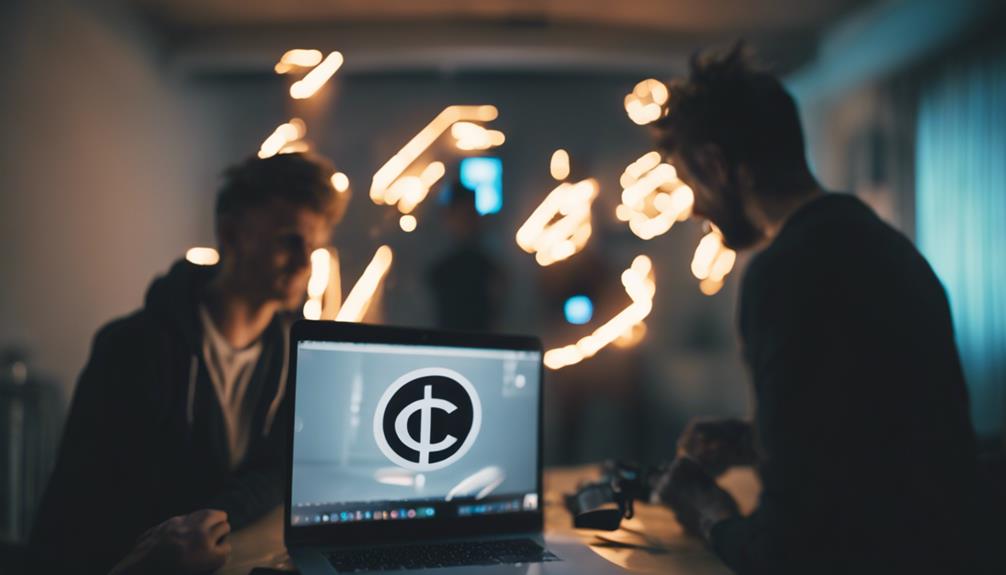
While understanding the repercussions of copyright infringement is crucial, it’s equally important to know how to handle false accusations of such violations on YouTube. Disputing ownership rights isn’t a walk in the park, but with the right approach, you can overcome false claims and clear your reputation.
Here are some concrete steps to help you handle false copyright claims:
- Gather Evidence: Compile all necessary documents that can prove your ownership of the content. This could include original files, drafts, or any correspondence related to the creation of the content.
- Submit a Counter-Notification: If someone files a copyright claim against your content, you have the right to submit a counter-notification if you believe the claim is erroneous.
- Consult a Legal Expert: Understanding copyright law can be complex. It’s often beneficial to consult with a legal expert to ensure you’re taking the right steps.
- Stay Calm and Patient: The process of disputing a copyright claim can be time-consuming and frustrating. Stay calm, patient, and persistent.
- Communicate: Open a dialogue with the claimant, if possible. Sometimes, misunderstandings can be resolved through communication.
Collaborative Use Vs. Infringement
Navigating the line between collaborative use and infringement on YouTube can be tricky. You need to master the nuances of copyright laws to ensure you’re not accidentally misusing video content.
If unauthorized usage happens, knowing how to handle it efficiently protects your interests and maintains your channel’s integrity.
Understanding Copyright Laws
To fully grasp the concept of copyright laws on YouTube, it’s essential to differentiate between collaborative use and infringement. Understanding the Fair Use Doctrine and Intellectual Property Rights can help you navigate this complex field.
- Collaborative use typically involves mutual agreement between creators, often leading to innovative content generation.
- In contrast, infringement is when someone uses your content without consent, violating your intellectual property rights.
- The Fair Use Doctrine comes into play when content is used for criticism, comment, news reporting, teaching, scholarship, or research.
- Understanding this doctrine helps to identify whether your content’s use falls under fair use or infringement.
- Keep in mind, each case is unique and may require professional legal advice.
Identifying Video Misuse
Now that you have a basic understanding of copyright laws, it’s crucial to know how to identify if your video content on YouTube is being used collaboratively or being infringed upon. This distinction can be the difference between mutual growth and Digital Piracy Consequences.
Here’s a quick guide:
| Collaborative Use | Infringement | |
|---|---|---|
| Permission | You’ve given approval | No permission granted |
| Credit | You’re credited as the original creator | No credit or misattribution |
| Impact | Enhances your visibility | Dilutes your content’s authenticity |
Content Authenticity Verification is key: if your video appears elsewhere without your permission or proper credit, you’re likely facing infringement. Spotting misuse early can save you time, energy, and potential revenue loss. Keep your content safe and your creative spirit undiluted.
When you’re faced with unauthorized usage of your YouTube content, distinguishing between collaborative use and infringement becomes a pivotal step in protecting your creative rights. It’s essential to understand the difference as the former can bring growth opportunities, while the latter can lead to revenue loss.
- Collaborative Use: This could be another creator enhancing, modifying, or incorporating your content in their work, with proper credits.
- Infringement: This is outright theft, where your content is used without permission or attribution, violating copyright laws.
Here’s what you need to do:
- Identify the type of usage
- Evaluate its impact on your channel’s growth and revenue
- Take appropriate action to halt infringement
- Pursue infringement penalties if necessary
- Use this as an opportunity to build collaborations and safeguards.
Keeping Your Content Safe: Final Thoughts
After all, safeguarding your original content on YouTube requires a vigilant, informed approach and an understanding of the platform’s copyright policies. To ensure your digital rights are well-managed, you need to stay abreast with the platform’s evolving regulations. Exploiting YouTube’s built-in features like Content ID can help you track unauthorized usage and take action swiftly.
Content monetization, while lucrative, can also be a double-edged sword, exposing your work to potential misuse. As a content creator, it’s vital for you to foster a solid understanding of YouTube’s monetization policies, which could also serve as a deterrent against misuse.
Finally, understand that securing your content isn’t a one-time task. It’s an ongoing commitment that demands your consistent attention and action. Be proactive in reporting infringements, be firm with offenders, and be consistent in enforcing your rights.
Innovation is key in this digital era. To stay ahead, you need to be creative not only in your content creation but also in your approach to protecting your work. Remember, your content is your intellectual property, and it’s worth fighting for.

